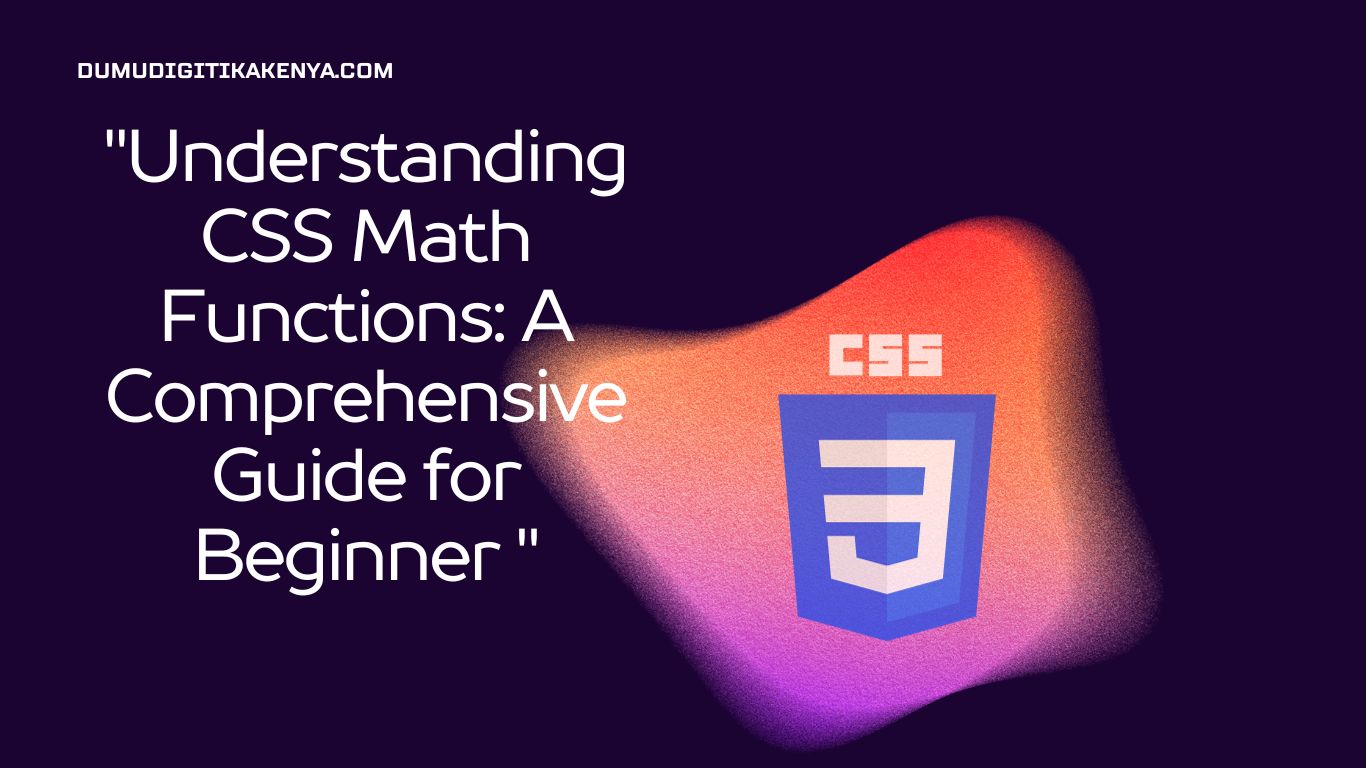Understanding CSS Math Functions: A Comprehensive Guide for Beginners
In the ever-evolving world of web design, the power of CSS (Cascading Style Sheets) goes beyond merely enhancing the visual appeal of web pages. In this comprehensive guide, we delve into a crucial but often underexplored facet of CSS – the CSS Math Functions. We’ll unravel the potential of these mathematical functions, which allow web developers to create responsive and dynamic designs, thus elevating user experiences. Whether you’re new to web development or a seasoned pro, this tutorial will equip you with the knowledge and skills to wield CSS Math Functions effectively in your projects.
CSS Math Functions enable you to perform arithmetic operations directly within your style sheets, making it possible to adapt layouts and dimensions effortlessly. We will walk you through the basics, including addition, subtraction, multiplication, and division in CSS, before delving into the crown jewel, the calc() function. With its syntax and practical applications, you’ll learn how to center elements, create dynamic font sizes, and master the art of responsive design. Armed with this knowledge, you’ll gain a deeper understanding of CSS’s versatile capabilities and harness its potential to craft visually captivating and adaptable web interfaces.

Table of Contents
1. Introduction to CSS Math Functions
CSS Math Functions provide a way to perform calculations and apply the results directly to CSS properties. This feature makes it easier to create responsive and dynamic designs without relying on JavaScript or other programming languages. CSS Math Functions are particularly useful for adjusting layout and dimensions.
2. Basic Mathematical Operations
Before diving into CSS Math Functions, let’s review some basic mathematical operations you can perform with CSS:
- Addition (+): You can add values in CSS. For example:
width: 100px + 20px;would set the width to 120px. - Subtraction (-): Subtract values in CSS. Example:
height: 200px - 50px;sets the height to 150px. - Multiplication (*): Multiply values in CSS. Example:
font-size: 16px * 1.5;increases the font size to 24px. - Division (/): Divide values in CSS. Example:
margin: 30px / 2;sets the margin to 15px.
3. Using calc() Function
The most powerful CSS Math Function is calc(). It allows you to combine multiple operations and values within a single CSS property.
Syntax: calc(expression)
The expression can include any combination of basic mathematical operations and values. For instance:
width: calc(50% - 20px);In this example, the width property is set to 50% minus 20 pixels.
4. Practical Examples
Let’s dive into practical examples to understand CSS Math Functions better:
Example 1: Responsive Margin
/* Original CSS */
.container {
width: 300px;
margin: 0 auto;
}
/* Using calc() for responsive margin */
.container {
width: 300px;
margin: 0 auto;
margin-left: calc(50% - 150px);
}In this example, the calc() function is used to center the .container horizontally. It calculates the left margin by subtracting half of the container’s width from 50%.
Example 2: Dynamic Font Size
/* Original CSS */
.text {
font-size: 16px;
}
/* Using calc() for dynamic font size */
.text {
font-size: calc(16px + 2vw);
}Here, the font size is set to 16px plus 2% of the viewport width (vw), making the font size responsive to the viewport size.
Conclusion
CSS Math Functions provide a valuable tool for web developers to create dynamic and responsive web layouts without relying on external scripting languages. The calc() function, in particular, is incredibly versatile, allowing for complex calculations within your CSS.
As you’ve learned in this tutorial, you can use basic mathematical operations and the calc() function to adjust CSS properties such as width, margin, font size, and more. This capability empowers you to create more flexible and responsive web designs.
Now that you have a fundamental understanding of CSS Math Functions, continue to experiment and apply them to your projects. As you gain more experience, you’ll discover the limitless possibilities of CSS for web development. Happy coding!
By mastering CSS Math Functions, you’ll be well-equipped to create visually stunning and responsive web designs with precision.
Remember that practice is key to mastery, so keep experimenting and building to strengthen your CSS skills. Feel free to explore other advanced CSS features and integrate them into your projects to create professional and engaging web experiences.




